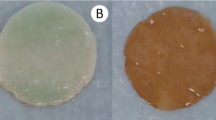Abstract
The Rapid Bioconversion with Integrated recycling Technology (RaBIT) process uses enzyme and yeast recycling to improve cellulosic ethanol production economics. The previous versions of the RaBIT process exhibited decreased xylose consumption using cell recycle for a variety of different micro-organisms. Process changes were tested in an attempt to eliminate the xylose consumption decrease. Three different RaBIT process changes were evaluated in this work including (1) shortening the fermentation time, (2) fed-batch hydrolysate addition, and (3) selective cell recycling using a settling method. Shorting the RaBIT fermentation process to 11 h and introducing fed-batch hydrolysate addition eliminated any xylose consumption decrease over ten fermentation cycles; otherwise, decreased xylose consumption was apparent by the third cell recycle event. However, partial removal of yeast cells during recycle was not economical when compared to recycling all yeast cells.








Similar content being viewed by others
References
Balan V (2014) Current challenges in commercially producing biofuels from lignocellulosic biomass. ISRN Biotechnol 2014:463074. doi:10.1155/2014/463074
Balan V, Bals B, Chundawat SPS, Marshall D, Dale BE (2009) Lignocellulosic biomass pretreatment using AFEX. In: Mielenz JR (ed) Biofuels: methods and protocols, vol 581. Humana Press, Totowa, pp 61–77. doi:10.1007/978-1-60761-214-8
Bals BD, Gunawan C, Moore J, Teymouri F, Dale BE (2013) Enzymatic hydrolysis of pelletized AFEX(TM)-treated corn stover at high solid loadings. Biotechnol Bioeng 111(2):264–271. doi:10.1002/bit.25022
Campbell TJ, Teymouri F, Bals BD, Glassbrook J, Nielson CD, Videto JJ (2013) A packed bed ammonia fiber expansion reactor system for pretreatment of agricultural residues at regional depots. Biofuels 4(1):23–34. doi:10.4155/bfs.12.71
Geddes CC, Nieves IU, Ingram LO (2011) Advances in ethanol production. Curr Opin Biotechnol 22(3):312–319. doi:10.1016/j.copbio.2011.04.012 (Elsevier Ltd)
Humbird D, Davis R, Tao L, Kinchin C, Hsu D, Aden A, Schoen P et al (2011) Process design and economics for biochemical conversion of lignocellulosic biomass to ethanol: dilute-acid pretreatment and enzymatic hydrolysis of corn stover. NREL Technical Report
Jin M, da Costa Sousa L, Schwartz C, He Y, Sarks C, Gunawan C, Balan V, Dale BE (2015) Toward lower cost cellulosic biofuel production using ammonia based pretreatment technologies. Green Chem. doi:10.1039/C5GC02433A
Jin M, Gunawan C, Uppugundla N, Balan V, Dale BE (2012) A novel integrated biological process for cellulosic ethanol production featuring high ethanol productivity, enzyme recycling and yeast cells reuse. Energy Environ Sci 5(5):7168. doi:10.1039/c2ee03058f
Kim S, Dale B (2015) All biomass is local: the cost, volume produced, and global warming impact of cellulosic biofuels depend strongly on logistics and local conditions. Biofuels Bioprod Biorefin. doi:10.1002/bbb
Parreiras LS, Breuer RJ, Avanasi Narasimhan R, Higbee AJ, La Reau A, Tremaine M, Qin L et al (2014) Engineering and two-stage evolution of a lignocellulosic hydrolysate-tolerant Saccharomyces cerevisiae strain for anaerobic fermentation of xylose from AFEX pretreated corn stover. PLoS One 9(9):e107499. doi:10.1371/journal.pone.0107499
Powell CD, Quain DE, Smart KA (2003) Chitin scar breaks in aged Saccharomyces cerevisiae. Microbiology 149(11):3129–3137. doi:10.1099/mic.0.25940-0
Powell C, Quain D, Smart K (2003) The impact of brewing yeast cell age on fermentation performance, attenuation and flocculation. FEMS Yeast Res 3(2):149–157. doi:10.1016/S1567-1356(03)00002-3
Sarks C, Higbee A, Piotrowski J, Xue S, Coon JJ, Sato TK, Jin M, Balan V, Dale BD (2016) Quantifying pretreatment degradation compounds in solution and accumulated by cells during solids and yeast recycling in the Rapid Bioconversion with Integrated recycling Technology process using AFEX™ corn stover. Bioresour Technol 205:24–33. doi:10.1016/j.biortech.2016.01.008
Sarks C, Jin M, Sato TK, Balan V, Dale BE (2014) Studying the rapid bioconversion of lignocellulosic sugars into ethanol using high cell density fermentations with cell recycle. Biotechnol Biofuels 7:73. doi:10.1186/1754-6834-7-73
Sluiter JB, Ruiz RO, Scarlata CJ, Sluiter AD, Templeton DW (2010) Compositional analysis of lignocellulosic feedstocks. 1. Review and description of methods. J Agric Food Chem 58(16):9043–9053. doi:10.1021/jf1008023
Wallace R, Ibsen K, McAloon A, Yee W (2005) Feasibility study for co-locating and integrating ethanol production plants from corn starch and lignocellulosic feedstocks (revised). doi:10.2172/15011708
Acknowledgements
This work was supported by the U.S. Department of Energy through the DOE Great Lakes Bioenergy Research Center (GLBRC) Grant DE-FC02-07ER64494. We thank Novozymes for supplying the commercial enzymes for this work. We thank Dr. Trey K. Sato for providing the microbial strain and Dr. Rebecca Garlock-Ong and Charles Donald, Jr. for providing/preparing lab scale AFEX-pretreated corn stover. We also thank MBI (Lansing, MI) for providing pilot scale AFEX-pretreated corn stover. We thank Christa Gunawan for the HPLC analysis and Margaret Magyar for providing laboratory assistance when needed. Finally, we thank the members of the GLBRC fermentation group from the University of Wisconsin for their valuable suggestions and input. AFEX is a trademark of MBI, International (Lansing, MI).
Author information
Authors and Affiliations
Corresponding authors
Ethics declarations
Conflict of interest
The authors declare that they have no conflict of interest.
Electronic supplementary material
Below is the link to the electronic supplementary material.
Rights and permissions
About this article
Cite this article
Sarks, C., Jin, M., Balan, V. et al. Fed-batch hydrolysate addition and cell separation by settling in high cell density lignocellulosic ethanol fermentations on AFEX™ corn stover in the Rapid Bioconversion with Integrated recycling Technology process. J Ind Microbiol Biotechnol 44, 1261–1272 (2017). https://doi.org/10.1007/s10295-017-1949-5
Received:
Accepted:
Published:
Issue Date:
DOI: https://doi.org/10.1007/s10295-017-1949-5




